I have been drinking cold-brewed iced tea all summer and I cannot believe I only just now thought to share it with all of you. You probably already have a favorite recipe for iced tea, but if you haven’t tried cold brewing it yet I highly recommend it. It’s a wink and a nod to Sun Tea, which was my favorite summertime drink as a child (but without the risk of food poisoning that Sun Tea has), and I think it’s the perfect way to enjoy the last few days of summer. With any luck warm weather will carry into autumn, but if not there’s always next summer. ;)
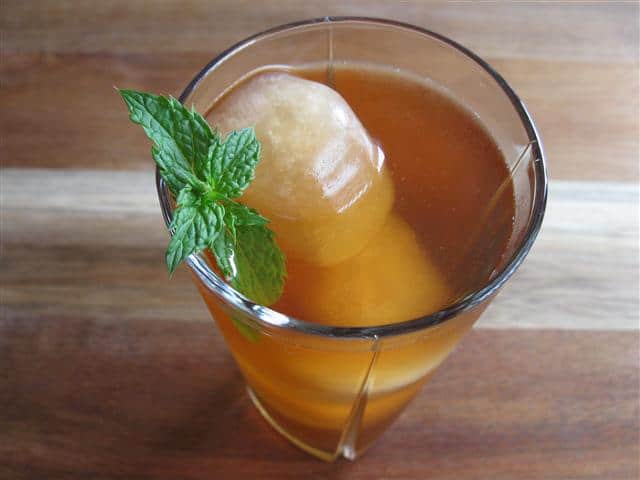
Step 1: To start, you will need a vessel in which to brew the tea. A lidded glass jug works well, as the glass prevents odors from being absorbed.
Step 2: The amount of tea you use depends on how strong you like your tea. If using loose leaf tea, a good rule of thumb is to use four teaspoons of tea per quart of water. If using tea bags, use two tea bags per quart of water. You can mix and match as many different kinds of tea as you want, or you can add spices, herbs or fruit for flavor. A few of my favorite combinations are black tea with fresh rosemary and lemon peel, white tea with blueberries (be sure to wash and chop the blueberries before adding), and green tea with mint. I have even made iced chai tea with cinnamon, nutmeg, ginger, cloves, cardamom, black peppercorns, and vanilla bean.

Step 4: To make the tea, combine the tea leaves or bags and water with any spices, herbs or fruit you want in a glass container and refrigerate 12 to 24 hours (depending on your taste preference). If you want, you can give the jug a gentle swirl from time to time while brewing, but it is not necessary. Sample the tea at different times during the brewing process to see how its flavor develops; you may notice more pronounced flavor highlights at different times.
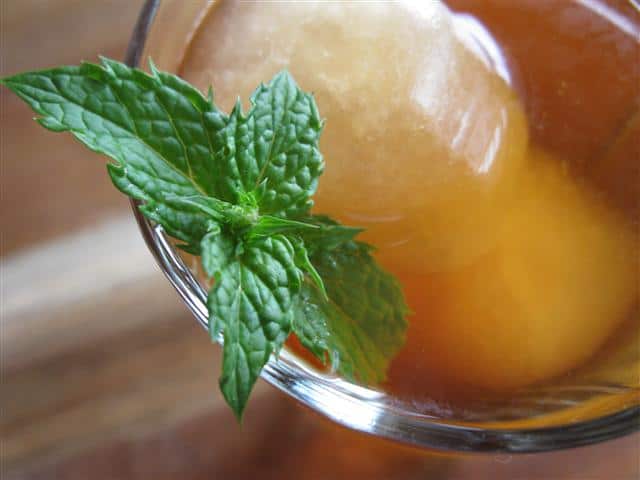
Each brew of tea is delicate and unique, making it a masterpiece in its own right. A hot afternoon, a cold glass of iced tea, and a symphony of flavors work wonders for refreshing the soul.


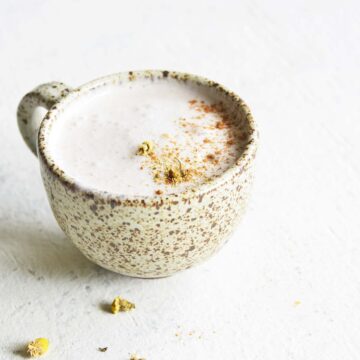
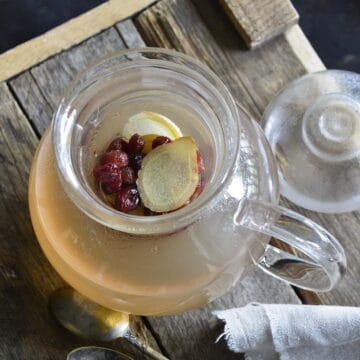
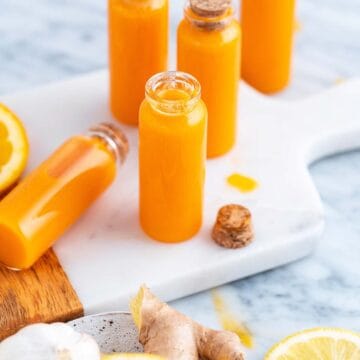
Veronica says
I used to cold brew tea a lot and then stopped when I cut back on sugar and realized I don't like iced tea without it. LOL! But now I have a thing for peppermint tea (I love it with or without sweetener), I will have to try cold brewing it. Thanks for your great tips!
MaryMoh says
Looks very refreshing....mmmm. I love iced lemon tea. Would love to add mint next time for an added kick :D
fruit tea says
well its already September now but its still hot, I hope iced tea can help me with it ease my temper a bit :)
Reeni says
I cold brew tea too Faith! But I never thought to add spices and fruit to it - genius! Love all your flavoring ideas.
The Southern Cookbook says
Iced tea is a must in my house. Being from the south, I keep this handy at all times. It's just habit. I haven't tried the cold brew. always sun tea or steeped tea. Great post!
grace says
wonderful how-to, faith! i'm a year-round drinker of iced tea (ridiculously sweetened, if you please), and i appreciate your tips!
deana@lostpastremembered says
You got my attention with maple syrup in ice tea... I do love it so and have never ever tried it... thanks for the idea!
Selba says
Love brewed ice tea especially on a hot day, it's so refreshing :)
Maria @ ScandiFoodie says
Looks lovely and refreshing! I shall keep this recipe in mind as we head towards summer!
Sophie says
Hello Faith!!
Your lovely iced tea looks grand & mighty tasty! ooh,..yes!
Nicole, RD says
I LOVE tea! Iced tea is hands down my favorite beverage and my mommy makes the best brewed tea! I'm going to have her make me some this weekend! Great topic!!
Monet says
I am a huge tea drinker, but it has simply been too warm to enjoy here in Austin. I need to transfer over to Iced Tea! Thank you for taking the time to share the steps you take to brew your own tea. I will be doing this in the near future!
Emily says
OMG I am so glad you caught the "12" cups on my recipe. That was supposed to be 2 cups! I fixed it, thanks for catching it before I made someone's dinner very disappointing!!! ;)
Fitness Surfer says
Just what I need. Today i finally accepted that i have a bit of a cold...ok sinusitis. I've been drinking fluids like crazy, taking extra vitamins, getting lots of rest. Either way i need to mix up the fluids. This will help and be delicious.
Mo says
How interesting! Is there a difference in flavor when you brew it hot than when you brew it cold?
admin says
Mo, I think there is a huge difference between cold-brewed iced tea and hot-brewed tea that has been iced. Cold-brewing brings out all the subtle flavor notes in the tea and cold-brewed tea has less tannins, which results in a less bitter, more naturally sweet flavor. If you like iced tea, I definitely recommend trying it this way! :)
FOODESSA says
Faith...iced tea...especially with fresh mint leaves sweetened by a ginger syrup is my very favourite refreshing drink. Nice to see that you enjoy it too ;o)
Thank you for sharing your idea for the spice blend to go with your tea.
Flavourful wishes,
Claudia
HPD says
The new Celestial Seasonings iced teas are pretty darn cool. Make it by the glass or the pitcher. And cheap! Two bucks gets you a 10-15 glasses, a lot more than you'll get at your local cafe or coffee shop!
Lazaro says
Faith,
Perfect tea to be the oppressive summer heat.
Jessie says
You know, Faith, I'm ashamed to say that I've never even heard of cold-brewing! I always thought iced tea was made from brewing hot tea and then sticking the tea in the fridge. I can imagine this tea would have much more delicate and subtle flavors than a hot brewed iced tea. With temps in the 90s over the next few days, I should definitely try this!
My Carolina Kitchen says
Faith, great tips on brewing tea. I used to make sun tea when we lived in the islands a lot, but I've lost my sun tea pot somewhere along the way. Your cold brew method sounds very easy and I'll give it a try.
Sam
Marisa says
Gotta try this!
zerrin says
Never tried to make it at home. Sounds easy and a very good alternative to coke. So refreshing!
Honey @ honeyandsoy says
You know, I really feel like reaching out and grabbing a glass of that tea- it looks perfect and refreshing, and the mint leaf sits there so wonderfully. I'm glad it's becoming warmer over here so I can make some of my own soon!
Anna Johnston says
I adore iced chai tea with lots of spices. We're not big on iced tea in Oz, but when I've had it I really like it..., your tea 'tips' are great. Thanks for sharing.
Veronica says
I used to do this and haven't for at least five years! Tea is the only thing besides water that I'm allowed to drink on the HGC protocol so I'll have to break out the cold-brewed stuff again b/c it's so easy!
marla {family fresh cooking} says
Thanks for these tips on cold brewed iced tea. I always learn from you Faith. I did not know about food poisoning from Sun Tea. I'll stick with your cold brew :) xo
Cara says
Definitely going to try this.
I have some spiced tea in my cupboard that
will work perfectly. Thanks for sharing.
Lorraine @NotQuiteNigella says
Isn't it the best for hot weather! hubby used to buy bottles of the stuff before realising how easy it is to make (and how much better for you to make the real stuff rather than use a powder).
Ameena says
I'm glad I read this post after iftaar because otherwise I would have been even thirstier! This would really hit the spot during the dog days of summer!
BeadedTail says
Sounds very refreshing! Thanks for the tips on how to cold brew it - especially the sweetener ideas! Mmmm!
Jen says
I love iced tea and will need to give this a try. Thank you for all of the great tips!
Emily says
This does sound refreshing. Sometimes there is nothing like a nice glass of cold tea. I have been cutting back on soda again (I go back and forth from drinking it to trying to give it up) so I have been drinking more tea!
Julie says
I've never tried tea this way. You've inspired me to give it a try. Thanks!
Carolyn Jung says
I keep a carafe of ice tea made just this way in my fridge during the summer. It's especially good when I'm on deadline and need my afternoon hit of caffeine. ;)
Juliana says
My husband loves iced tea...looks so refreshing :-), will try the different "flavors"
jen cheung says
i only had it once this summer!!!
have a fabulous week lady!
jen @ http://www.passion4food.ca
Aimee says
I love iced tea. It's always my bev of choice and I will definitely try this sometime soon. I tried to make my own iced tea once using a lipton tea bag, but it wasn't doing it for me. This sounds really good. And again the photos are beautiful.
Thank you for your comment today, Faith. It made my day :]
Take care<3
Mary says
This looks so incredibly refreshing Your photos of the tea are spectacular. I hope you are having a great day. Blessings...Mary
Priyanka says
I brewed a big pot of coffee this morning to make Iced coffee, but after reading this post I am craving iced tea now!!!
Xiaolu says
I grew up enough in the South that I'm well acquainted with and enjoy a good iced tea, but never think to make it myself for some reason. Thanks for introducing me to this easy and versatile brewing method!
Katerina says
My husband is great fun of the particular drink. He drinks it by the kilos. This is a great recipe. I will make it for him.
Joanne says
I love iced tea but have actually never cold brewed it myself before! I love all of the complex flavors you added into this...makes it that much more unique and that much tastier!
Rosa says
A lovely recipe! There is nothing like homemade ice tea!
Cheers,
Rosa
Blond Duck says
Iced tea is a Texas staple.
Mimi says
Ice cold tea is just so refreshing.
Mimi
Louise Mellor says
Just bought some green tea that will work perfect... thanks for the reminder
~Chef Louise
Heavenly Housewife says
Although tea is the main drink in the UK, you never really see iced tea here. What a refreshing idea for summer.
*kisses* HH
kim says
I drink so much iced tea (sometimes diet...so bad) during the summer. It's very refreshing and like you said, goes great with any herbs. My fav is mint. :)
5 Star Foodie says
Very refreshing! My daughter tried a spiced iced tea this summer and thought it was the best thing in the world :)
Dana says
This sounds nice and refreshing, but I don't think I'm patient enough to wait 12-24 hours... I'd be tasting it every hour to see if it was ready yet lol
coco says
I had brewed iced tea yesterday (by accident) because I wanted it immediately and it was too hot, so I added ice and it came out great! It's so convenient and so refreshing! :)